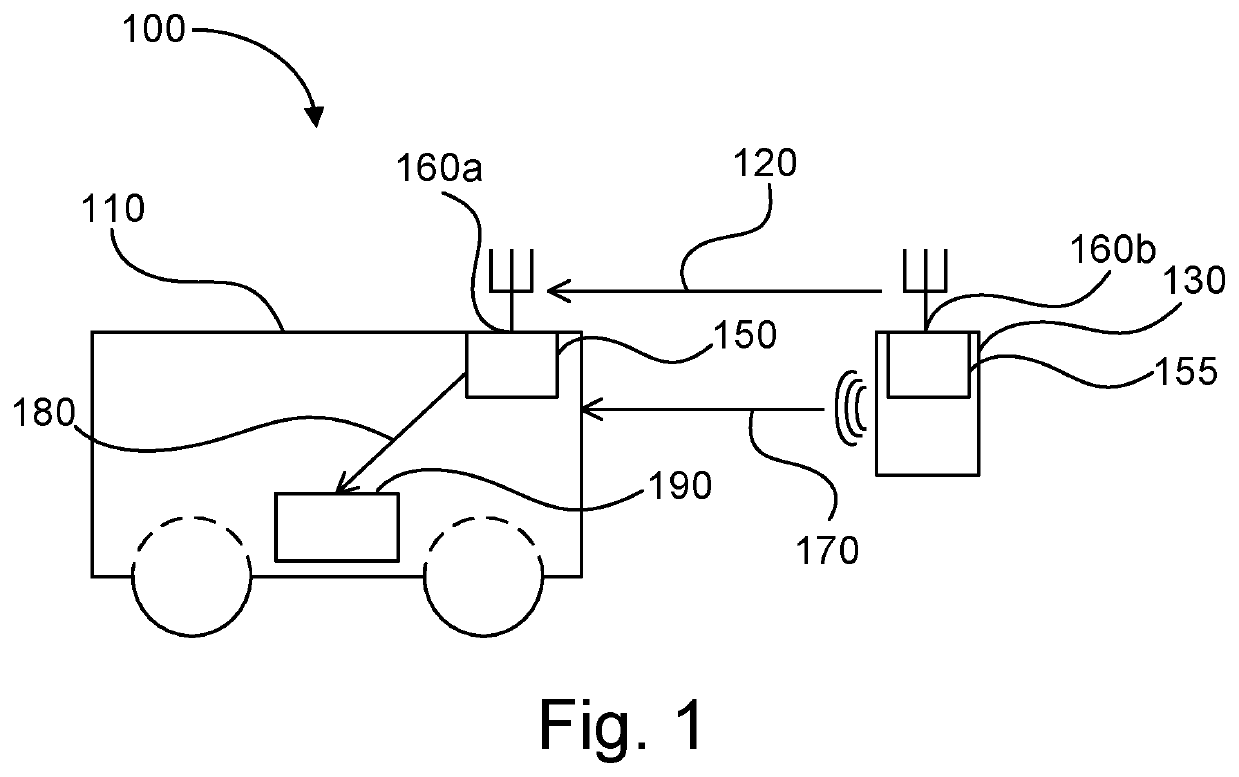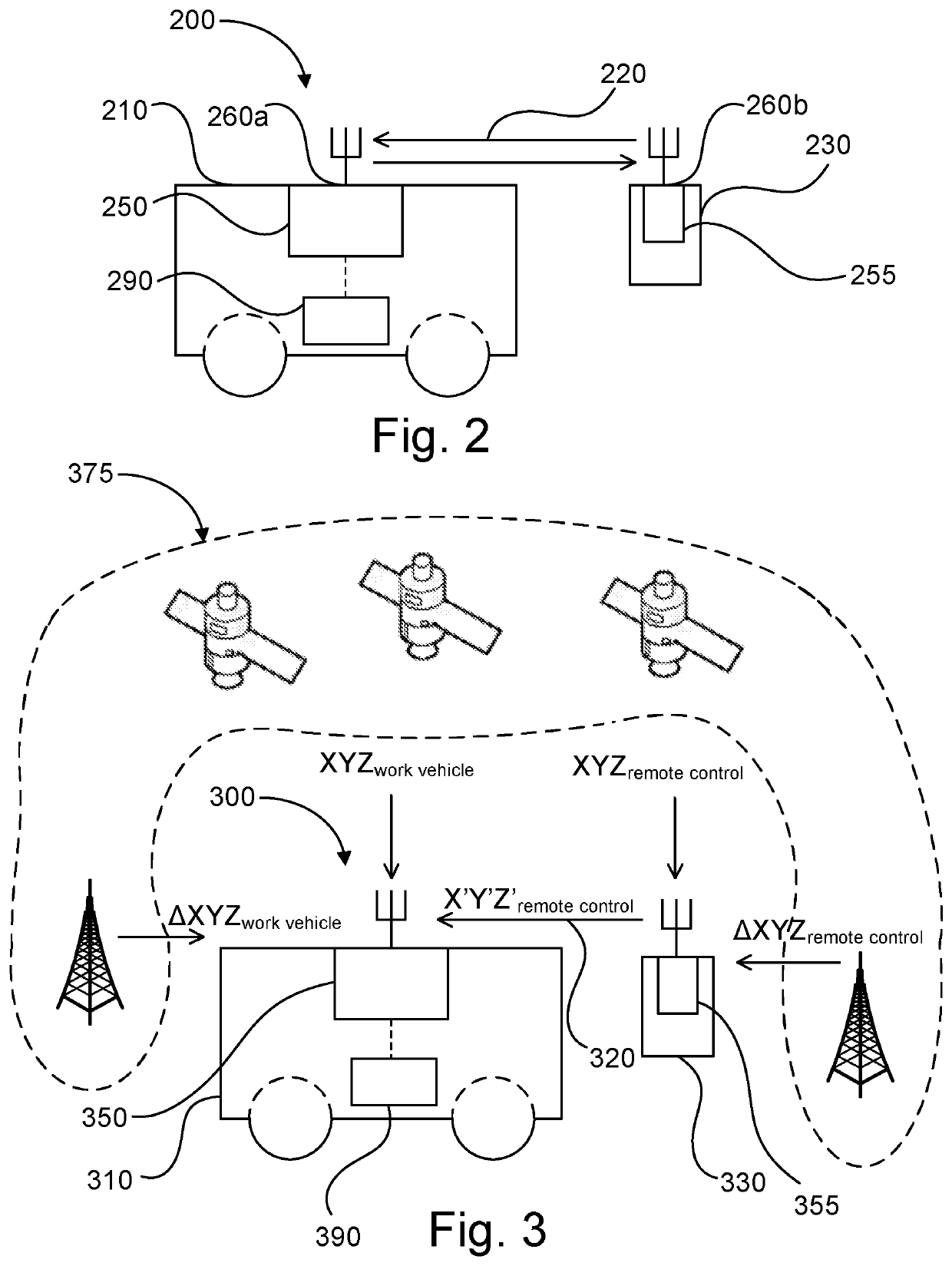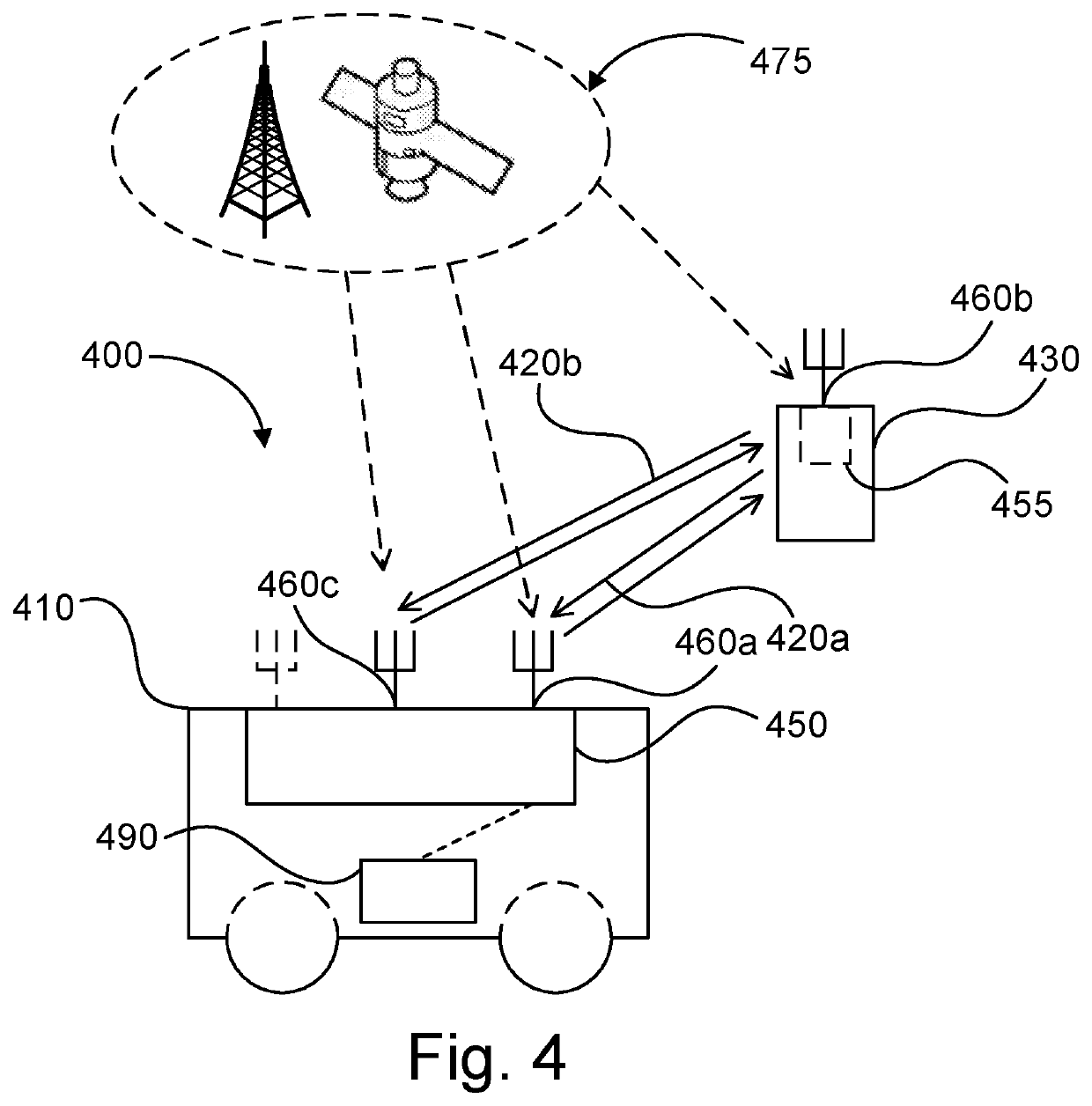Safety system, method and computer program for remotely controlled work vehicles
a safety system and work vehicle technology, applied in direction finders using radio waves, instruments, reradiation, etc., can solve problems such as system problems, system stress, and many work vehicles, so as to reduce the probability of all signals, and improve the accuracy of gnss coordinates
- Summary
- Abstract
- Description
- Claims
- Application Information
AI Technical Summary
Benefits of technology
Problems solved by technology
Method used
Image
Examples
Embodiment Construction
[0037]In the following description the wording “arranged at” is to be understood as comprising “arranged on” and “arranged in” as well as being “arranged in proximity to”, e.g. by the use of a distancing element, unless otherwise stated. For instance, a transceiver “arranged at” the work vehicle may be arranged partially or completely in the work vehicle. An example of “partially in” could be the transceiver being arranged in the work vehicle with an antenna of the transceiver extending outside of the work vehicle. The transceiver may also be arranged on the work vehicle, e.g. mounted on a surface of the work vehicle. It is sometimes preferable to mount e.g. a signal transmitting or receiving unit at a distance from the work vehicle to reduce the impact of signal obstruction from dirt and work vehicle components and “arranged at” is to be understood to include such cases as well.
[0038]FIG. 1 illustrates a safety system 100 for a remotely operated work vehicle 110. FIG. 1 illustrates...
PUM
 Login to View More
Login to View More Abstract
Description
Claims
Application Information
 Login to View More
Login to View More - R&D
- Intellectual Property
- Life Sciences
- Materials
- Tech Scout
- Unparalleled Data Quality
- Higher Quality Content
- 60% Fewer Hallucinations
Browse by: Latest US Patents, China's latest patents, Technical Efficacy Thesaurus, Application Domain, Technology Topic, Popular Technical Reports.
© 2025 PatSnap. All rights reserved.Legal|Privacy policy|Modern Slavery Act Transparency Statement|Sitemap|About US| Contact US: help@patsnap.com



